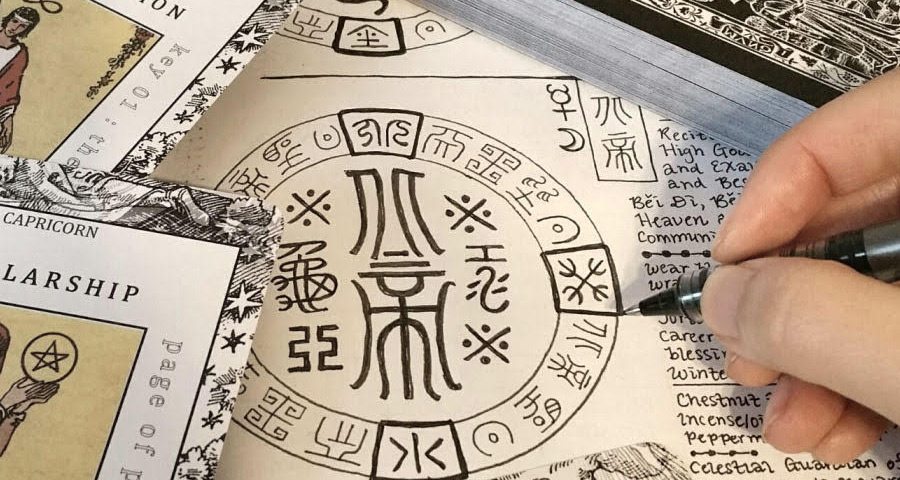Understanding the Role of Chinese Talismans in Ancient and Modern Practices
Throughout history, symbols have been powerful tools for expressing beliefs, channeling energy, and seeking divine guidance. Among these sacred objects, the Chinese Talisman holds a significant place in both ancient and modern spiritual practices. Rich with symbolism and rooted in Taoist traditions, these talismans are more than simple artifacts; they serve as channels of spiritual authority, protection, and healing. Their enduring presence highlights the deep connection between culture, spirituality, and the human search for harmony.
A Chinese Talisman is typically created with sacred symbols, characters, and strokes believed to carry divine meaning. Traditionally consecrated by Taoist priests, talismans embody centuries of ritual knowledge and spiritual intent. Today, they continue to be used and appreciated for their cultural significance and symbolic power. For those interested in exploring these spiritual tools, collections such as Chinese Talisman offer access to authentic designs rooted in Taoist heritage.
Ancient Origins and Historical Importance
The origins of Chinese talismans date back to the Han dynasty, when Taoist practitioners began using sacred scripts to invoke deities, dispel harmful spirits, and maintain balance between human and cosmic realms. These talismans, often inscribed on paper, wood, or cloth, became essential in rituals that addressed health, protection, prosperity, and spiritual harmony.
Each stroke in a talisman is intentional, designed to communicate with spiritual entities. Taoists believe that the writing used in these talismans is a form of celestial script, a divine language that can be understood by deities and spiritual beings. This belief elevated the talisman beyond physical writing, giving it authority as a spiritual medium.
Protective Role of Chinese Talismans
One of the most enduring uses of Chinese talismans is protection. In ancient times, talismans were placed at doorways, carried in pockets, or worn as amulets to safeguard against negative spirits, misfortune, and illness. They were especially prominent during festivals and seasonal changes, times when spiritual vulnerability was thought to be higher.
Taoist priests would consecrate talismans through prayer, chanting, and ritual acts, imbuing them with the energy required to act as spiritual shields. In modern times, their protective function remains important, with many people using them in their homes or carrying them to maintain peace and ward off negative energy.
Healing and Restoration
Healing is another key role associated with Chinese talismans. Ancient practices often involved burning a talisman and mixing the ashes with water, which the individual would then drink as a spiritual remedy. This ritual represented the ingestion of divine energy, restoring harmony between body, spirit, and the natural world.
These talismans were not limited to curing physical illnesses but also addressed spiritual and emotional imbalances. Taoist philosophy sees health as the result of harmony between Yin and Yang and the smooth flow of qi, or life force. Talismans provided a means to restore this balance, helping individuals recover from disruptions in their spiritual and physical well-being.
Spiritual Balance and Daily Life
Beyond protection and healing, Chinese talismans have always been connected with the pursuit of spiritual balance. They are often used in meditation, rituals, and daily practices to align one’s energy with the cosmic order. In Taoist homes, talismans might be placed in specific areas to promote peace, prosperity, and harmony within the household.
They also serve as reminders of Taoist values such as unity with nature, acceptance of the Tao, and balance between opposing forces. By keeping a talisman nearby, practitioners reinforce their connection to these guiding principles in everyday life.
Modern Adaptations of Ancient Practices
While Chinese talismans have their roots in ancient spiritual traditions, they continue to be relevant today. Many people, both within and outside Taoist communities, value them as symbols of protection, cultural heritage, and spiritual grounding. Some may use them in meditation practices, while others appreciate their presence as meaningful artifacts that connect them to centuries of Taoist wisdom.
The modern appeal of talismans lies not only in their symbolic power but also in their role as cultural touchstones. They bridge the past with the present, allowing individuals to engage with a living tradition that has adapted to contemporary needs while retaining its essence.
Conclusion
The Chinese Talisman represents a profound synthesis of culture, spirituality, and ritual. From its origins in ancient Taoist practices to its continued use today, it has served as a source of protection, healing, and balance. More than a physical object, it embodies the enduring quest for harmony between humanity, nature, and the cosmos. Whether carried as a safeguard, used in healing, or cherished as a cultural symbol, the talisman continues to play an essential role in both ancient and modern practices, offering wisdom and guidance across generations.







